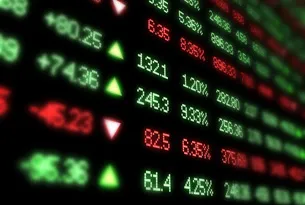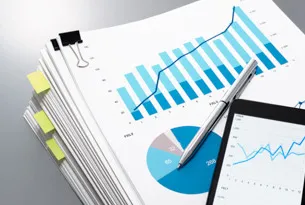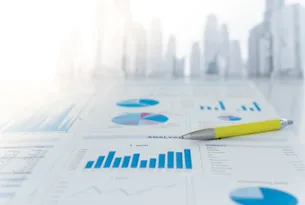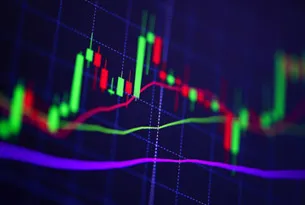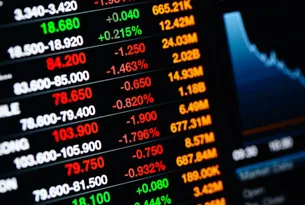Many investors make mistakes because they rely on opinions—which can be wrong—rather than actual market price and volatility data, argues Stephen Hammers of Compass EMP Funds in Part Two of his interview with MoneyShow.com.
Kate Stalter: Well, I think the next logical question, then, is: How do you envision these being used? How would our listeners who are individual investors—how could they ultimately benefit from this?
Stephen Hammers: There is a tremendous amount of assets following indexes, because there are a lot of investors that are not fans of active stock managers. So what they do is, they plug money into cheap, or low-expense, cap-weighted ETFs, for example.
They want to invest in the stock market, but the stock market does better than most managers. There is that big benefit of what’s called enhanced indexing. There’s almost three quarters of a trillion dollars following enhanced indexes, like Wisdom Tree indexes, RAFI Indexes, indexes like that.
This takes that term, “enhanced indexing,” or fundamental indexing, passive indexing, to a whole other level. Not a lot of buying and selling, represents a broad market, but spreading risk out more evenly, compared to what’s available out there. So it allows an investor to track the market or follow the market in a much more efficient way.
Kate Stalter: Would this be something that you would envision advisors adopting? Or is this something that a person sitting at home could replicate by themselves?
Stephen Hammers: A person sitting at home definitely could not, simply because the large cap has 500 securities in them. There’s a lot of corporate action going all the time—mergers, acquisitions, all that. An investor is not going to sit at home and just buy themselves the broad market. You know, that’s just not feasible or possible.
Large institutions would. There is a mutual fund coming out in two months on this—it’s already in filing—on all these indexes. The Compass EMP Fund will have that. There will most likely be ETFs coming out, because it’s such an enhancement to passive indexing, but there will be a way for everybody to use it.
Kate Stalter: We just have a couple more minutes here, but I did want to follow up on the topic that we have discussed most frequently here, which is the managed futures space. We’ve seen some of this volatility come back to the equity markets. We’ve obviously seen yields on the ten-year just plunging recently.
For you, being in that managed futures spaces, where you can follow the trends either up or down and capitalize from both sides, it seems that you would have a pretty good vantage point at this particular juncture in the markets.
Stephen Hammers: Well, we do, and we don’t manage just managed futures. That’s one small piece. We do have commodity portfolios, bond-hedging portfolios, stock-hedging portfolios, long-only portfolios, all in one fund on the Compass EMP Fund (CAITX).
But regarding the marketplace, it really goes back to last summer. In the last 12 months—until recently—the markets have been way down, way up, and a trend really hasn’t developed like it had the 15 years prior to that. And that was all because of last summer, when things started declining, just like we’re seeing now, is everyone was worried about a sluggish economy, problems in Europe, rising debt, rising spending, and it created a lot of—lack of faith; let’s call it that.
And then all of a sudden, everybody thought Greece was going to be saved, and things were going to get better, and then all of a sudden the stock market went up. Well, it never did, and it never should have gone up, and now investors are starting to realize that.
And hey, things are bad. It’s not the companies that are bad. It’s the governments around the world creating the problem, due to the spending and the high growth. The bottom line is, they're spending more than they have, and so it’s creating worries and lack of confidence for employers going out and spending money and investing money. And capital isn’t working.
Well, since April 1—since the end of the first quarter—markets have begun to decline, and they’re getting worse, and things are going to tumble from here. When you have a stock market down 8%, international markets down 12% to 14%, commodity markets down 17%, no light at the end of the tunnel...
We actually began to hedge back in April, and as a matter of fact, now that stock markets are down 8% to 13%, we’re actually flat, on our way to positive, and we’ve been positive all week this week. It’s due to the developing trends that are happening, which is good for us. It’s good for an alternative fund to be able to do that for an investor.
Kate Stalter: For an alternative investor, or maybe any investor, even: Is it wise to be identifying the trend and following that, or trying to predict where you think these more macro events might go?
Stephen Hammers: I am not a fan at predicting where things might go.
Now it is quite obvious that fundamentally, companies look great. The US economy is growing. It’s still sluggish, and there are a lot of market analysts, chief economists, chief investment officers that—you know, when I’m on CNBC with them, or when I’m on all these shows with them, talking about it and they think things are going to get great from here.
There’s more behind it. The mothership of it all is what is causing the problem. And so the problem is, if you don’t follow the trend, then your opinion can cause major mistakes. That’s why most investors make mistakes, because they put their opinion on what they think is going to happen, and a lot of times they’re not right.
But the price never lies. The price is actually where the markets are going. They don’t lie. That’s why our index follows the price and the volatility. The price is actually what is happening, so either you follow the price on the way up, or you follow it down.
But investors must have a very, very strong discipline of when those trends begin and end, and should not be based on their opinion. That is why the Compass EMP Funds do that, and we do well at it.
Kate Stalter: Last question for you today, just to follow up on that: Other than investing in your fund, what is a way for individual investors to stay on top of these trends? To keep their opinion out of it? What would you suggest?
Stephen Hammers: Well, if an investor wanted to do it on their own, they really need to learn about what a trend is and what is not.
And there are many different ways to look at it. In its simplest form, an investor could potentially follow a moving average, like the 200-day moving average. The price is above the trend, you’re long. Below the trend, you’re short—or half, whatever.
Now, that exact 200-day moving average doesn’t always work. We use many, many different factors involving volatility, momentum, time frame, all those things. It requires a lot of study and it’s not a game—especially when you’re using your money or somebody else’s money.
So, that’s why those that manage funds—mutual funds or hedge funds—they do it for a reason: Because they’re good at it and have studied for many, many years. And it’s taken us about 18 years to get to this point, and I don’t think most retirees have that time.
Related Reading:



















